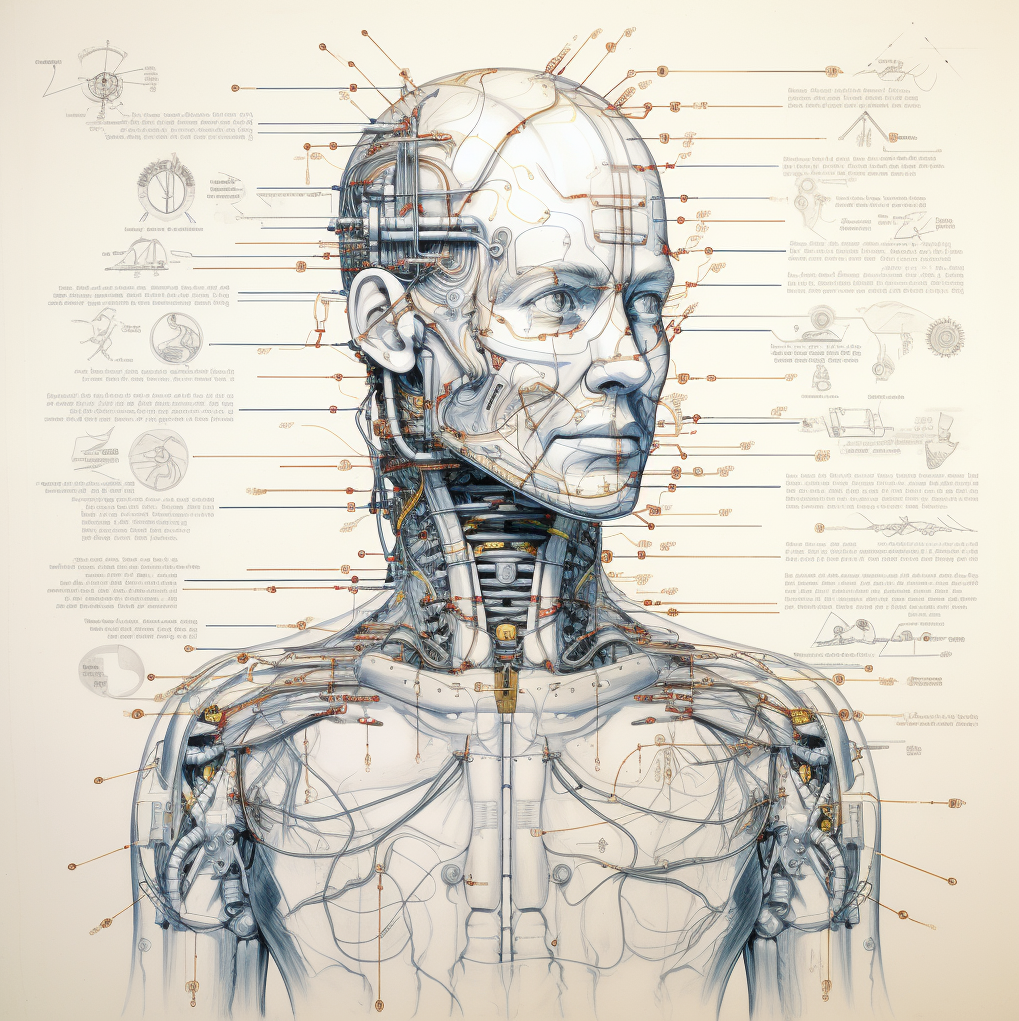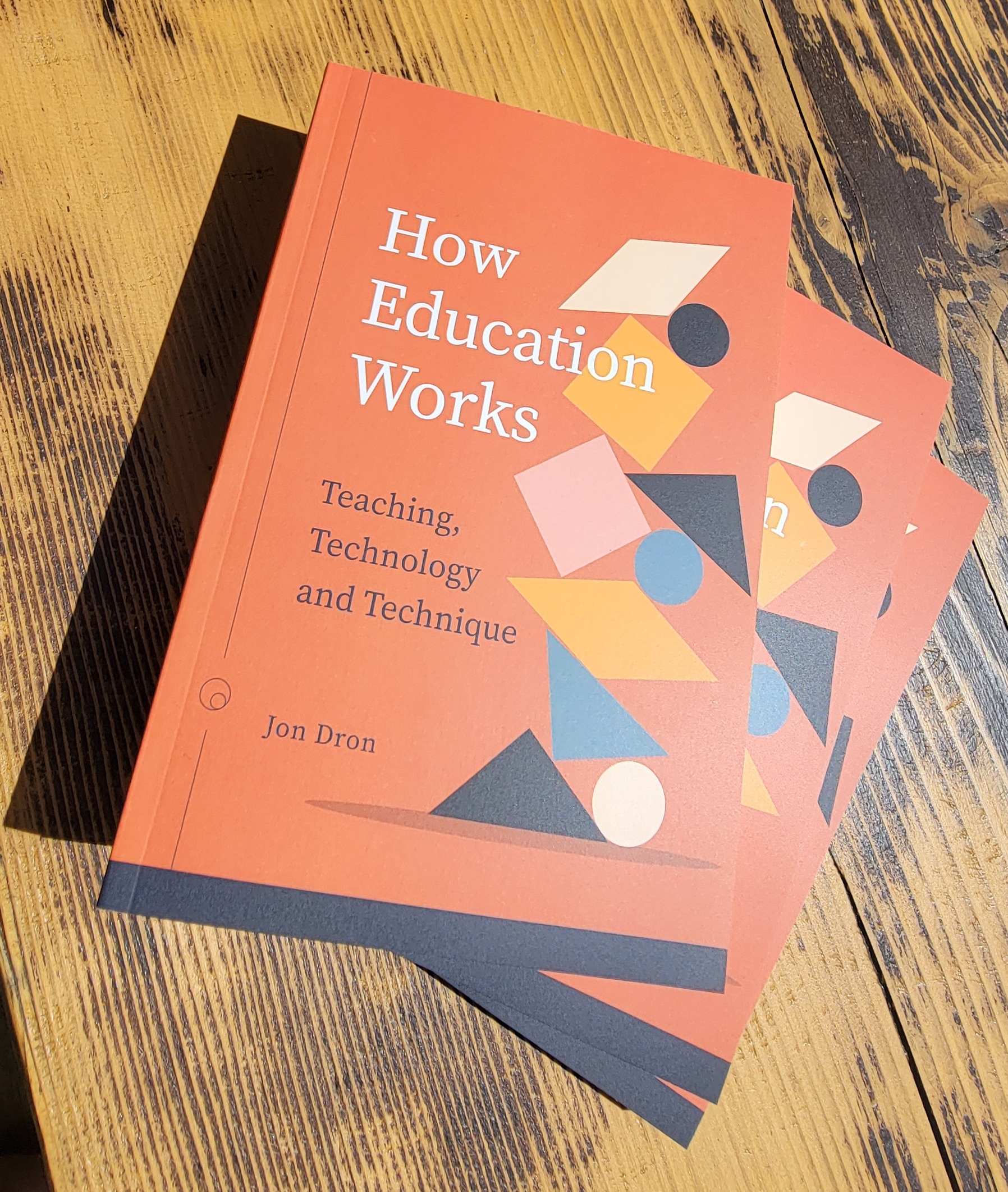Here are the slides from a talk I gave earlier today, hosted by George Siemens and his fine team of people at Human Systems. Terry Anderson helped me to put the slides together, and offered some great insights and commentary after the presentation but I am largely to blame for the presentation itself. Our brief was to talk about sets, nets and groups, the theme of our last book Teaching Crowds: learning and social media and much of our work together since 2007 but, as I was the one presenting, I bent it a little towards generative AI and my own intertwingled perspective on technologies and collective cognition, which is most fully developed (so far) in my most recent book, How Education Works: Teaching, Technology, and Technique. If you’re not familiar with our model of sets, nets, groups and collectives, there’s a brief overview on the Teaching Crowds website. It’s a little long in the tooth but I think it is still useful and will help to frame what follows.

The key new insight that appears for the first time in this presentation is that, rather than being a fundamental social form in their own right, groups consist of technological processes that make use of and help to engender/give shape to the more fundamental forms of nets and sets. At least, I think they do: I need to think and talk some more about this, at least with Terry, and work it up into a paper, but I haven’t yet thought through all the repercussions. Even back when we wrote the book I always thought of groups as technologically mediated entities but it was only when writing these slides in the light of my more recent thinking on technology that I paid much attention to the phenomena that they actually orchestrate in order to achieve their ends. Although there are non-technological prototypes – notably in the form of families – these are emergent rather than designed. The phenomena that intentional groups primarily orchestrate are those of networks and sets, which are simply configurations of humans and their relationships with one another. Modern groups – in a learning context, classes, cohorts, tutorial groups, seminar groups, and so on – are designed to fulfill more specific purposes than their natural prototypes, and they are made possible by technological inventions such as rules, roles, decision-making processes, and structural hierarchies. Essentially, the group is a purpose-driven technological overlay on top of more basic social forms. It seems natural, much as language seems natural, because it is so basic and fundamental to our existence and how everything else works in human societies, but it is an invention (or many inventions, in fact) as much as wheels and silicon chips.
Groups are among the oldest and most highly evolved of human technologies and they are incredibly important for learning, but they have a number of inherent flaws and trade-offs/Faustian bargains, notably in their effects on individual freedoms, in scalability (mainly achieved through hierarchies), in sometimes unhealthy power dynamics, and in limitations they place on roles individuals play in learning. Modern digital technologies can help to scale them a little further and refine or reify some of the rules and roles, but the basic flaws remain. However, modern digital technologies also offer other ways of enabling sets and networks of people to support one another’s learning, from blogs and mailing lists to purpose-built social networking systems, from Wikipedia and Academia.edu to Quora, in ways that can (optionally) integrate with and utilize groups but that differ in significant ways, such as in removing hierarchies, structuring through behaviour (collectives) and filtering or otherwise mediating messages. With some exceptions, however, the purposes of large-scale systems of this nature (which would provide an ideal set of phenomena to exploit) are not usually driven by a need for learning, but by a need to gain attention and profit. Facebook, Instagram, LinkedIn, X, and others of their ilk have vast networks to draw on but few mechanisms that support learning and limited checks and balances for reliability or quality when it does occur (which of course it does). Most of their algorithmic power is devoted to driving engagement, and the content and purpose of that engagement only matters insofar as it drives further engagement. Up to a point, trolls are good for them, which is seldom if ever true for learning systems. Some – Wikipedia, the Khan Academy, Slashdot, Stack Exchange, Quora, some SubReddits, and so on – achieve both engagement and intentional support for learning. However, they remain works in progress in the latter regard, being prone to a host of ills from filter bubbles and echo chambers to context collapse and the Matthew Effect, not to mention intentional harm by bad actors. I’ve been exploring this space for approaching 30 years now, but there remains almost as much scope for further research and development in this area as there was when I began. Though progress has been made, we have yet to figure out the right rules and structures to deal with a great many problems, and it is increasingly difficult to slot the products of our research into an increasingly bland, corporate online space dominated by a shrinking number of bland, centralized learning management systems that continue to refine their automation of group processes and structures and, increasingly, to ignore the sets and networks on which they rely.
With that in mind, I see big potential benefits for generative AIs – the ultimate collectives – as supporters and enablers for crowds of people learning together. Generative AI provides us with the means to play with structures and adapt in hitherto impossible ways, because the algorithms that drive their adaptations are indefinitely flexible, the reified activities that form them are vast, and the people that participate in them play an active role in adjusting and forming their algorithms (not the underpinning neural nets but the emergent configurations they take). These are significant differences from traditional collectives, that tend to have one purpose and algorithm (typically complex but deterministic), such as returning search results or engaging network interactions. I also see a great many potential risks, of which I have written fairly extensively of late, most notably in playing soft orchestral roles in the assembly that replace the need for humans to learn to play them. We tread a fine line between learning utopia and learning dystopia, especially if we try to overlay them on top of educational systems that are driven by credentials. Credentials used to signify a vast range of tacit knowledge and skills that were never measured, and (notwithstanding a long tradition of cheating) that was fine as long as nothing else could create those signals, because they were serviceable proxies. If you could pass the test or assignment, it meant that you had gone through the process and learned a lot more than what was tested. This has been eroded for some time, abetted by social media like Course Hero or Chegg that remain quite effective ways of bypassing the process for those willing to pay a nominal sum and accept the risk. Now that generative AI can do the same at considerably lower cost, with greater reliability, and lower risk, without having gone through the process, they no longer make good signifiers and, anyway (playing Devil’s advocate), it remains unclear to what extent those soft, tacit skills are needed now that generative AIs can achieve them so well. I am much encouraged by the existence of George’s Paul LeBlanc’s lab initiative, the fact that George is the headliner chief scientist for it, its intent to enable human-centred learning in an age of AI, and its aspiration to reinvent education to fit. We need such endeavours. I hope they will do some great things.








